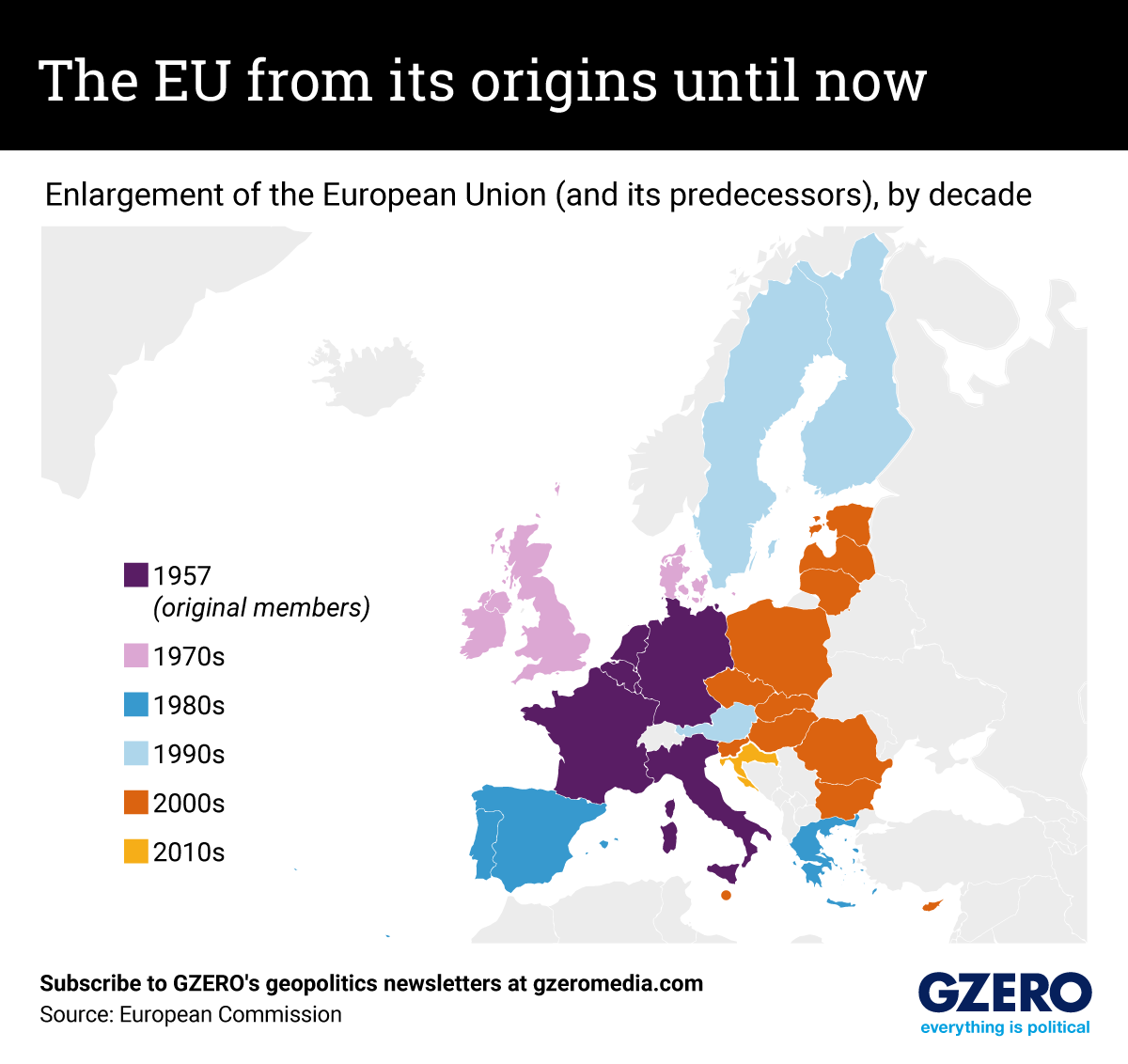July 02, 2023
It’s been 10 years since the world’s largest economic bloc, the European Union, last expanded, admitting Croatia in July 2013. Amid the perennial challenges of getting more than two dozen countries to agree on common policies, and the constant wrangling between national capitals and Brussels over issues like budgets, immigration, or sanctions, it’s easy to forget that the EU, for all its faults, has anchored the longest period of relative peace in Western Europe since the Roman Empire.
How has it grown over that time? The 27-member bloc began in the 1950s as an economic grouping of six Western European countries, and from the 1970s onwards it expanded. The 1990s saw the creation of a single market, common currency, and visa-free travel, while the 2000s saw the Union’s biggest enlargement to date: a dozen countries, all but two of them from the former Soviet bloc. Only one country has ever left the EU, of course, but you know that story.
Currently, accession negotiations are farthest along with Serbia and Montenegro, though there have been calls to accelerate talks with Ukraine as a bulwark against future Russian encroachment. Here is a map showing when, and where, the EU has expanded over the years.
More For You
Most Popular
What's Good Wednesdays
What’s Good Wednesdays™, December 10, 2025
Walmart sponsored posts
Walmart's $350 billion commitment to American jobs
Sponsored posts
Tools and Weapons – In Conversation with Ed Policy
- YouTube
‘Godfather of AI’ Geoffrey Hinton talks with Ian Bremmer about why he believes advanced AI could surpass human intelligence and why creating AI with ‘maternal instincts’ might be humanity’s best chance at survival.
© 2025 GZERO Media. All Rights Reserved | A Eurasia Group media company.
